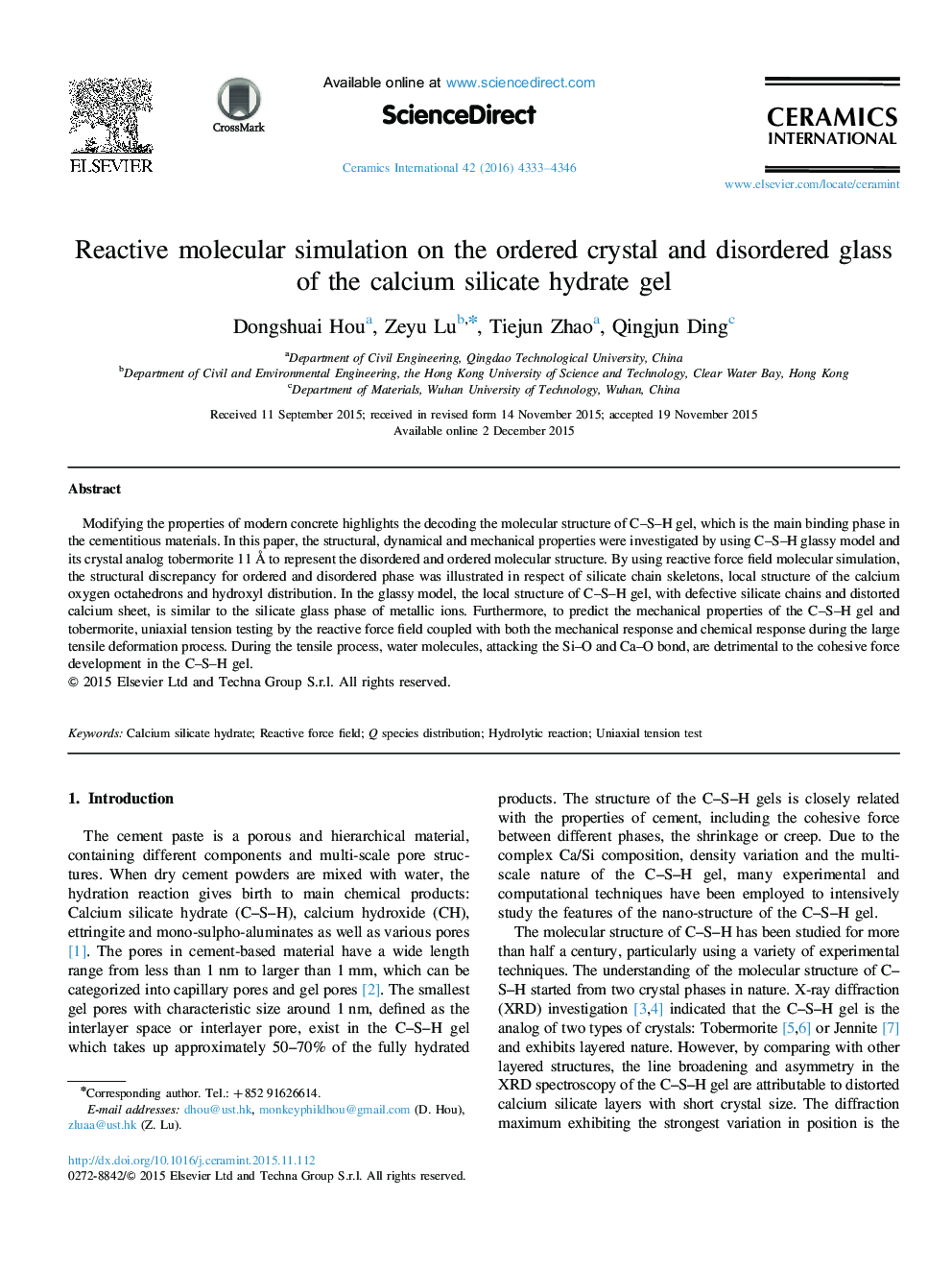| Article ID | Journal | Published Year | Pages | File Type |
|---|---|---|---|---|
| 1459172 | Ceramics International | 2016 | 14 Pages |
Modifying the properties of modern concrete highlights the decoding the molecular structure of C–S–H gel, which is the main binding phase in the cementitious materials. In this paper, the structural, dynamical and mechanical properties were investigated by using C–S–H glassy model and its crystal analog tobermorite 11 Å to represent the disordered and ordered molecular structure. By using reactive force field molecular simulation, the structural discrepancy for ordered and disordered phase was illustrated in respect of silicate chain skeletons, local structure of the calcium oxygen octahedrons and hydroxyl distribution. In the glassy model, the local structure of C–S–H gel, with defective silicate chains and distorted calcium sheet, is similar to the silicate glass phase of metallic ions. Furthermore, to predict the mechanical properties of the C–S–H gel and tobermorite, uniaxial tension testing by the reactive force field coupled with both the mechanical response and chemical response during the large tensile deformation process. During the tensile process, water molecules, attacking the Si–O and Ca–O bond, are detrimental to the cohesive force development in the C–S–H gel.
